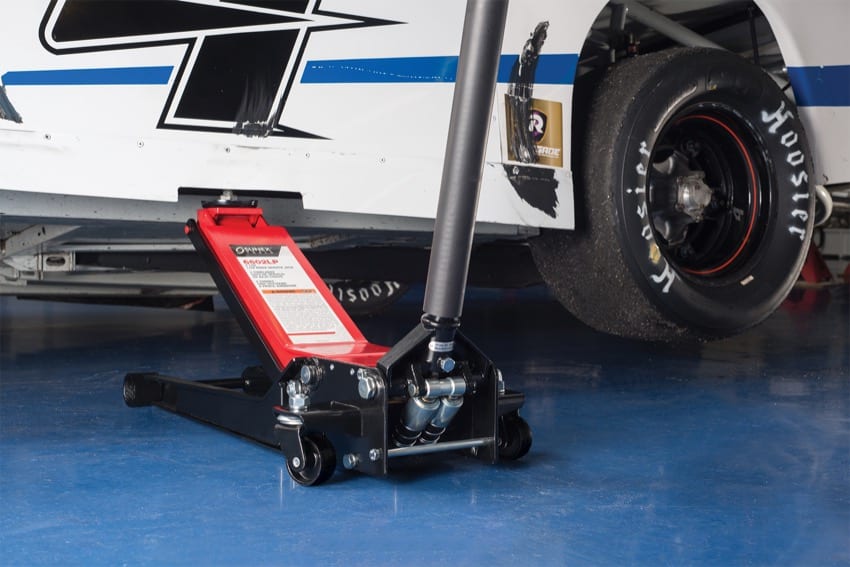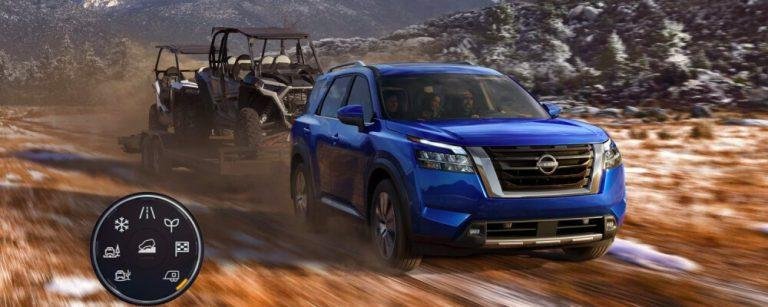For determining the correct jack size, check the weight rating on your vehicle’s owner’s manual or look for the gross vehicle weight rating (gvwr) listed on the driver’s side door jamb. This information will help you choose a jack that can support the weight of your vehicle.
The size of the jack you need depends on the weight of your vehicle, which can be found in the owner’s manual or on the driver’s side door jamb. The weight rating of the jack should match or exceed the weight of your vehicle.
Make sure to check this information before purchasing a jack to ensure it can safely lift your vehicle.

Credit: www.protoolreviews.com
Understanding The Basics
To determine the appropriate size of a jack, it is essential to understand the basics of weight capacity and lifting range. Assess the weight of the vehicle or object you intend to lift and compare it to the jack’s lifting capacity to ensure a proper fit.
Consider the lifting range to ensure the jack can reach the desired height.
Choosing the right size jack is crucial for safe and effective lifting of your vehicle. But with so many options available, it can be challenging to determine the perfect fit. In this section, we will explore the importance of choosing the right size jack and discuss the factors to consider when making your selection.
Additionally, we will delve into the relationship between vehicle weight and jack capacity, shedding light on this critical aspect. So, let’s dive in and uncover the basics of jack sizing.
Importance Of Choosing The Right Size Jack:
- Properly sizing your jack ensures safe and stable lifting of your vehicle, mitigating the risk of accidents and injuries.
- Using an inadequately sized jack can put excessive strain on its components, leading to failure and potential damage to your vehicle.
- Choosing the appropriate jack size maximizes efficiency, making the process of lifting your vehicle quicker and more hassle-free.
Factors To Consider When Selecting A Jack Size:
- Vehicle weight: The weight of your vehicle is a crucial factor in determining the right jack size. Different vehicle types and models have varying weights, which directly correlate to the capacity required for lifting. Keep in mind that your jack’s capacity should exceed the weight of your vehicle to ensure safe lifting.
- Vehicle type: The type of vehicle you own also plays a role in selecting the right jack size. Cars, trucks, suvs, and motorcycles may require different jack sizes due to variations in weight distribution and design. Consider the specific requirements of your vehicle type to make an informed choice.
- Intended use: Determine how you plan to use the jack. Are you primarily lifting your vehicle for routine maintenance or emergency roadside situations? This will help you evaluate the frequency and intensity of usage, which can influence your choice of jack size.
- Storage and portability: If you have limited storage space or frequently need to transport your jack, its size and weight become significant considerations. Opting for a compact and lightweight jack might be more convenient in such cases.
- Budget: Last but not least, consider your budget when selecting a jack size. While it’s important to invest in a reliable and appropriate-sized jack, ensure it aligns with your financial capability.
Understanding the factors above will empower you to choose the right jack size for your vehicle. By considering vehicle weight, type, intended use, storage/portability, and budget, you can make an informed decision that ensures both safety and practicality. So, let’s move on to exploring the relationship between vehicle weight and jack capacity in the next section.
Different Types Of Jacks
Choosing the right size jack is crucial for different tasks. Understanding what size jack you need depends on the weight capacity of the load and the type of vehicle or equipment being lifted. Find the perfect fit to ensure safety and efficiency.
When it comes to choosing the right jack for your needs, it’s important to understand the different types available. Each type of jack has its own unique features and benefits, so let’s take a closer look at some of the most common ones:
Hydraulic Jacks:
- Highly versatile and commonly used for lifting heavy loads.
- Operate by using hydraulic fluid to create pressure and raise the load.
- Ideal for use in garages, workshops, and industrial environments.
- Can handle significant weight capacities, making them suitable for a wide range of applications.
- Provide smooth and controlled lifting motions for added safety.
Scissor Jacks:
- Compact and lightweight jacks that are often included with vehicles for emergency tire changes.
- Comprise a scissor-like mechanism that expands vertically, providing lifting capability.
- Conveniently storable due to their small size, making them ideal for on-the-go use.
- Generally offer limited weight capacity compared to other types of jacks.
- Not recommended for heavy-duty lifting tasks.
Bottle Jacks:
- Compact and portable jacks that feature a bottle-shaped design.
- Use hydraulic pressure to lift heavy loads.
- Offer a high weight capacity, making them suitable for larger vehicles and equipment.
- Frequently used for lifting vehicles during tire changes or other maintenance tasks.
- Can be a bit slower in terms of lifting speed compared to other types of jacks.
Floor Jacks:
- One of the most common types of jacks used in automotive applications.
- Equipped with wheels and a long handle for easy maneuverability.
- Feature a large base for stability and enhanced lifting capacity.
- Typically used for lifting vehicles off the ground for repairs, maintenance, or inspections.
- Highly reliable and efficient when it comes to lifting heavy loads.
Remember, when selecting a jack, it’s important to consider the weight capacity required, the intended use, and the specific features that best suit your needs. By understanding the different types of jacks available, you can ensure that you choose the right one for your lifting requirements.
Determining The Right Jack Size For Your Vehicle
Determining the right jack size for your vehicle is crucial for effective lifting. Ensure a proper fit by considering your vehicle’s weight and clearance height requirements. Choose a jack size that meets these specifications to ensure safe and efficient maintenance or repair work.
Choosing the correct jack size for your vehicle is an important consideration to ensure safe and effective lifting. To help you make an informed decision, here is a guide that outlines factors to consider when determining the right jack size:
Guide For Choosing The Correct Jack Capacity:
- The weight of your vehicle: Consider the weight of your vehicle to determine the appropriate jack capacity. Using a jack with insufficient capacity can lead to accidents and damage.
- Follow the manufacturer’s guidelines: Refer to your vehicle manufacturer’s manual, as it usually provides information on the appropriate jack capacity for your specific vehicle.
- Future vehicle purchases: If you plan on purchasing a different vehicle in the future, it’s wise to select a jack with a higher capacity to accommodate potential changes.
Considerations Based On Vehicle Weight:
- Compact and mid-sized cars: Generally, these vehicles have a lower weight range. A jack with a capacity of 1 to 2 tons is usually suitable for lifting them safely.
- Suvs and trucks: These vehicles are typically heavier than compact and mid-sized cars. It is recommended to use a jack with a larger capacity, usually ranging from 2 to 4 tons, to ensure adequate support.
- Heavy-duty trucks and commercial vehicles: These vehicles require jacks with higher capacities, typically ranging from 4 to 20 tons, depending on the weight of the specific vehicle.
Matching The Jack To The Vehicle’S Lifting Points:
- Check your vehicle’s lifting points: Every vehicle has designated lifting points where the jack should be placed. Refer to your vehicle’s manual to identify these points accurately.
- Understand the jack’s lifting capabilities: Ensure that your jack’s lifting pad size aligns with your vehicle’s lifting points. Using the wrong size can cause instability and potential damage.
- Opt for a versatile jack: Consider purchasing a jack with adjustable height and lifting pad positions. This feature allows flexibility and ensures a secure fit to the vehicle’s lifting points.
Remember, safety should always be a priority when selecting the right jack size for your vehicle. By considering the vehicle weight, following manufacturer guidelines, and matching the jack to the vehicle’s lifting points, you can make an informed decision and lift your vehicle with confidence.
Stay safe and happy lifting!
Safe Usage And Maintenance Tips
Selecting the appropriate jack size is essential for safe usage and maintenance. Knowing the weight of your vehicle will help determine the right jack size for your needs.
Safety Precautions When Using A Jack:
Using a jack may seem like a simple task, but it’s important to follow safety precautions to prevent accidents and injuries. Here are some tips to ensure safe usage of a jack:
- Always read the manufacturer’s instructions and follow them carefully.
- Wear appropriate protective gear, such as safety goggles and gloves, to prevent any potential hazards.
- Before using the jack, inspect it for any visible damage or defects. Do not use a damaged jack.
- Make sure the jack is on a stable and level surface to prevent tipping or sliding.
- Use jack stands or blocks to support the vehicle once it has been lifted, providing additional stability and safety.
- Never work under a vehicle that is supported by only a jack. Always use additional support like jack stands.
- Avoid overloading the jack beyond its specified weight capacity. Check the weight rating of the jack and ensure it can handle the load.
- When lifting the vehicle, position the jack in a suitable location that provides proper support. Refer to the vehicle’s owner’s manual for specific lifting points.
- Slowly and carefully raise the vehicle using the jack, ensuring that it remains stable throughout the process.
- Once the vehicle is lifted, do not push or pull on it excessively, as this can lead to instability.
Proper Positioning And Stability:
Positioning the jack correctly and ensuring stability are crucial to prevent accidents and damage. Follow these tips for proper positioning and stability:
- Locate the correct lifting points on the vehicle. These points are often indicated in the owner’s manual and vary depending on the vehicle’s make and model.
- Position the jack directly under the lifting point, making sure it is centered and aligned properly.
- Ensure that the jack is on a level and solid surface, free from any cracks or obstacles that may cause instability.
- Double-check the stability of the jack before lifting the vehicle. Give it a gentle shake to ensure it is securely in place.
- Take extra precautions if working on an inclined surface. Position the jack on a lower part of the slope and use chocks or blocks to further secure the vehicle.
- Avoid sudden movements or jerking motions when operating the jack, as this can compromise its stability.
Regular Maintenance And Inspection Of The Jack:
To ensure the longevity and reliable performance of your jack, regular maintenance and inspection are essential. Here are some maintenance tips to keep your jack in good condition:
- Clean the jack after each use to remove dirt, debris, and any substances that may cause corrosion.
- Lubricate moving parts, such as hinges and joints, according to the manufacturer’s recommendations to prevent rust and ensure smooth operation.
- Inspect the hydraulic system for leaks, cracks, or any signs of damage. If any issues are found, consult a professional for repair or replacement.
- Check the jack’s weight rating and never exceed it. Overloading the jack can cause failure and compromise safety.
- Store the jack in a cool, dry place away from corrosive substances and extreme temperatures.
- Regularly inspect the jack for any wear and tear, including worn-out components, loose parts, or signs of structural damage. Replace any damaged parts immediately.
- Consult the manufacturer’s recommendations for any additional maintenance requirements specific to your jack model.
Remember, by following these safety precautions and properly maintaining your jack, you can ensure its safe usage and prolong its lifespan, ultimately enhancing your overall experience with it. Stay vigilant and prioritize safety at all times.
Frequently Asked Questions Of What Size Jack Do I Need?
How Do I Know What Size Jack To Buy?
To determine the right jack size, follow these steps: 1. Identify your vehicle’s weight: check your car’s user manual or online sources for the curb weight or gross vehicle weight rating (gvwr). 2. Consider the lifting capacity: ensure the jack you choose can lift at least 75% of your vehicle’s weight.
For example, if your car weighs 4,000 pounds, select a jack with a minimum lifting capacity of 3,000 pounds. 3. Check compatibility: verify that the jack fits your vehicle’s lift points. Some jacks are designed specifically for certain models or types of vehicles.
4. Choose the type of jack: there are various types available, including scissor jacks, hydraulic floor jacks, and bottle jacks. Consider factors such as ease of use, portability, and stability when making your selection. Remember, safety is crucial when lifting a vehicle, so always follow the manufacturer’s instructions and take proper precautions.
Is A 2 Ton Jack Enough For An Suv?
Yes, a 2-ton jack is sufficient for most suvs. Suvs typically weigh between 4,000 to 6,000 pounds (1,800 to 2,700 kilograms), and a 2-ton jack can handle weights up to 4,000 pounds (1,800 kilograms). Make sure your suv falls within this weight range.
It’s important to choose a jack with the appropriate weight capacity to ensure safety and stability while lifting your vehicle. Always consult your suv’s manual for exact weight specifications.
Do I Need A 3 Ton Jack For My Car?
Yes, it is recommended to use a 3-ton jack for your car. This type of jack has a higher weight capacity, making it suitable for most cars, suvs, and trucks. It offers better stability and support, ensuring your safety while working under your vehicle.
A 3-ton jack can easily lift your car from the designated lifting points, allowing you to change tires, perform maintenance, or make repairs. It is important to choose a jack that matches or exceeds your vehicle’s weight, as using an insufficient jack can lead to accidents and damage.
Therefore, investing in a 3-ton jack is a wise choice to ensure that you have the right tool for your car and can carry out any necessary work with confidence.
Can A 2 Ton Jack Lift A Chevy 1500?
Yes, a 2-ton jack can lift a chevy 1500. The 2-ton capacity of the jack refers to its lifting capability, which is sufficient to handle the weight of a chevy 1500. It is important to ensure that the jack is in good working condition and properly positioned on the vehicle’s recommended lifting points.
Always follow the manufacturer’s instructions and safety guidelines when using a jack to lift a vehicle. Remember to use additional support, such as jack stands, to secure the vehicle once it is lifted. Regularly inspect and maintain your jack to ensure its effectiveness and safety during use.
Conclusion
Determining the right size jack for your needs is a crucial factor in ensuring a safe and efficient lifting process. Remember to consider factors such as the weight of the object you need to lift, the intended use of the jack, and the lifting capacity of the jack itself.
By carefully evaluating and matching these elements, you can be confident in selecting the appropriate jack size for your specific requirements. Whether you are working on your car, handling heavy equipment, or engaging in other lifting tasks, having the right size jack will make your job much easier and safer.
So, take the time to assess your needs, consult the manufacturer’s recommendations if necessary, and make an informed decision. With the right size jack on hand, you can tackle any lifting project with confidence and peace of mind.







